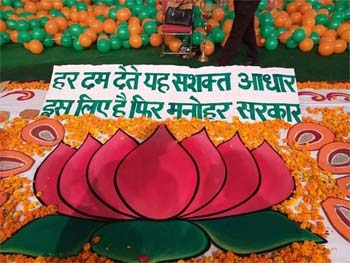 {Dr. K. Parameswaran*}
{Dr. K. Parameswaran*}
Jayasree and her friends were standing in a group around their science teacher, who was explaining to them about the Foucault’s pendulum that attracts the immediate attention of anyone who enters the Regional Science Centre that started functioning not long back in Coimbatore. Jayasree, a Plus 1 student said that the visit to the centre has made science come alive to herself and her friends.
Foucault’s Pendulum, named after the French physicist Leon Foucoult, is a simple device conceived as an experiment to demonstrate the rotation of the earth. While it had long been known that the earth rotated, the introduction of the Foucault pendulum in 1851 was the first simple proof of the rotation in an easy-to-see experiment.
For Ilavarasan, the Fun Science gallery and its interactive exhibits were interesting to the core. Jayashekhar, his father who was with him, said that the Centre was bringing the old adage into practice- you remember best what who learn by doing!
Experience and experiment based learning are the best ways to understand science. When science is learned is this manner, one is able to under stand better the basic concepts and this understanding will engender in students a better appreciation and liking for science.
The National Council of Science Museums (NCSM) is the apex body for science centres functioning under the Ministry of Culture, Government of India. The NCSM is actively engaged in enhancing the understanding and appreciation of science through a network of science centres and museums. The 44th Science Centre of the NCSM was inaugurated recently at Coimbatore in Tamilnadu.
The Center envisages a two pronged method of communication – exhibits and activities. Built in an area of about 4000 square metres at a cost of Rs 8.5 crores, the centre houses three permanent galleries – “Hall of Textiles’ ‘How things work’ and ‘Fun Science’.
Hall of Textiles : The Hall of Textile has a special significance in Coimbatore, which is also known as the Manchester of India. Its rich, black soil is highly suitable for the cultivation of cotton – one of the mainstays of the textiles industry. The latest figures show that there are about 25,000 industrial units connected with textiles in Coimbatore alone!
Textile making is one of the earliest occupations known to mankind – linen in Egypt, wool in Europe, cotton in India and silk in China. The story of textiles is basically the conversion of fibre to yarn and yarn to fabric. The technique remains the same; but the technology has undergone tremendous changes through the 12,000 year history of textiles. The latest development in field is the merger of nano technology and bio medicine into the development of specialized textile products.
The Hall of Textiles houses models, inter active exhibits as well as multi media presentations that give a bird eye view of the long and protracted history of textiles.
How Things work : The ‘How Things Work’ gallery is a bridge between science and daily life. It is an attempt to explain the basic science that exists behind various articles of daily use like various machines. The thrust is on explaining the scientific theories that work behind the machines. The bar code reader, various kinds of pumps, motors etc are some of the machines that are exhibited and explained in the gallery. It is spread over an area of 400 square meters and houses about 50 exhibits.
Fun Science Gallery : The Fun Science gallery houses inter active exhibits that make science learning an interesting and activity oriented experience. Optics, wave theory, electricity, magnetism etc can be learned through simple experiments. The gallery is spread over 600 squaremetres and consists of about 60 exhibits.
A children’s corner for small children, an inflatable planetarium, science park etc are some of the other attractions of the Regional Science Centre.
Science Park : The Science Park sprawls over an area of about eight acres. 45 exhibits based on gravity, optics, levers etc find place in the park. There are parabolic reflectors that sent whispers to distant corners, models of pre historic animals etc that make science and its history come alive. There are also busts of eminent Indian scientists to whom visitors can pay their respectful homage.
The Role of NCSM : The NCSM directly operates 25 science museums or centers. This is the largest network of science centres in the words under a single administrative control. The annual footfall in these centers have crossed the one crore mark and is still growing exponentially. The NCSM also operates 22 mobile science exhibitions. These units travel to rural areas and explains the basics of science to students in their mother tongues.
The main objectives of the NCSM include the development of a scientific attitude and temper, the inculcation and sustenance of scientific awareness, the systematic portrayal of the growth of science in India and the world at large.
*******
*The Writer is Assistant Director, PIB, in Madurai
*Disclaimer: The views expressed by the author in this feature are entirely his own and do not necessarily reflect the views of INVC.















